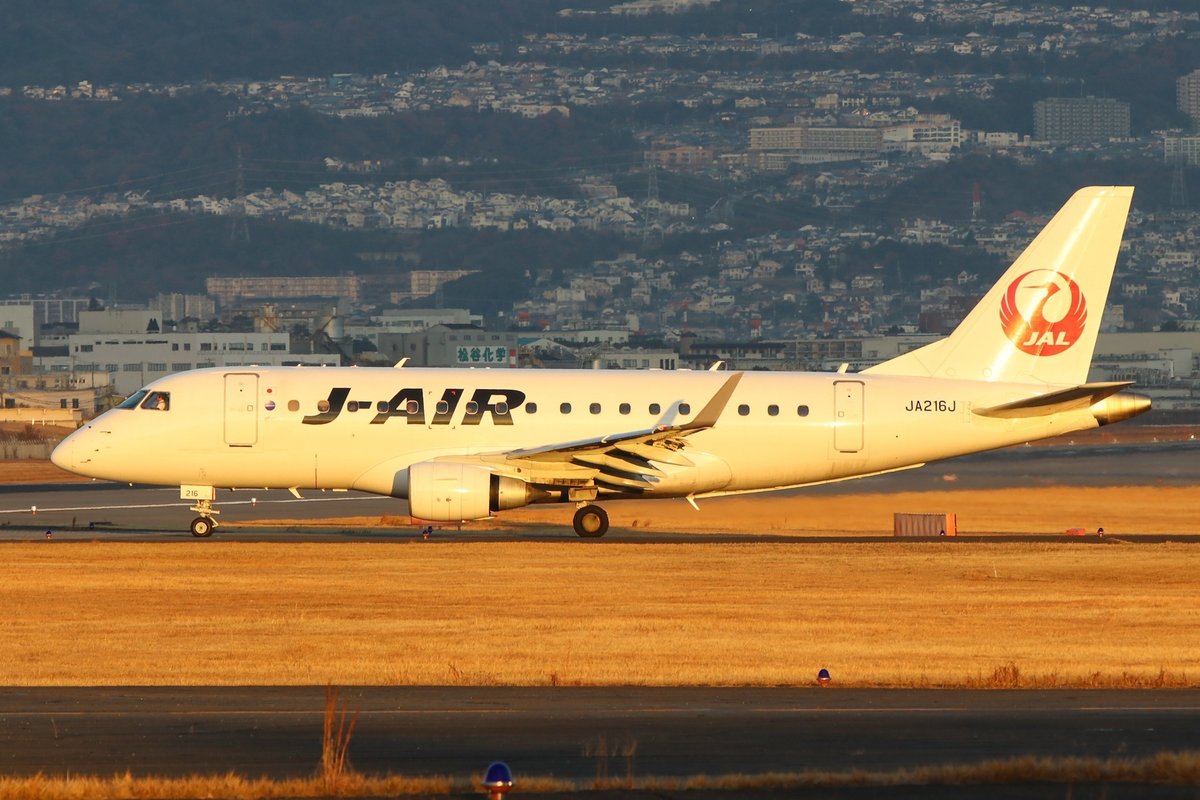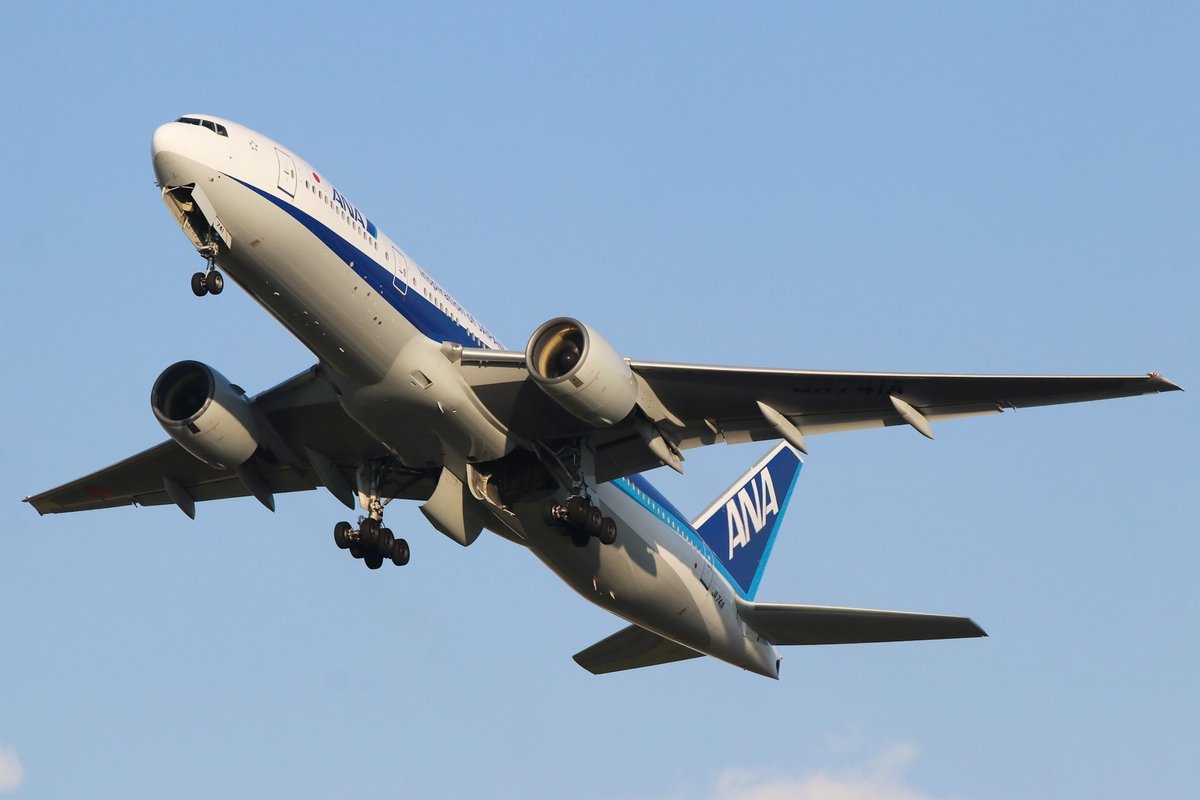
Aviation Spotting at Osaka Itami (ITM)
Basic info
Osaka Itami Airport (also known as Osaka International Airport ITM/RJOO) is located in the north of Osaka city, Japan. Due to its location, the airport has one of the most strict noise regulations in Japan. The regulation includes strict curfew (takeoffs and landings between 7AM until 9PM with possible extensions depending on the weather situation), banning airplanes with 3 or more engines and so on.
The airport used to serve as an international airport until the opening of Osaka Kansai International Airport (KIX/RJBB) in 1994. Today, ITM has been handling domestic flights only.
A very good news for foreign spotters: There is a public WiFi at the park along with the runway (spotting location 5). WiFi works on the observation deck at the airport as well.
What makes this airport special for foreign spotters?
- A main hub for ANA Q400 which you cannot see in Tokyo
- Japan Air Commuter and Amakusa Airlines ATR, which you cannot see in Tokyo, fly to Osaka ITM
- You can get closer to the runways comapred to Tokyo HND
- Most of the planes at this airport have cabin configurations only for Japan's domestic flights which means you can see them only in Japan
- Airplanes including B777 on final approach fly just 30m above your head
- There are flights almost every 30 minutes between Tokyo HND and Osaka ITM, good option for one day spotting even if you stay in Tokyo
Environment for spotting
Risk:very low
Enviroment for photography:very good
Traffic:Japanese airlines only
Row Risk
There is no risk at all as long as you do not illegally enter the restricted area. No one will stop you from spotting, and you will see a lot of other spotters even on weekdays. However, please be sure not to cross or enter any private areas such as nearby residents, and take your rubbish with you. Especially train spotters in Japan often leave rubbish and enter private area without permissions, and it is often severely criticized on the TV and social media. Therefore, do not act like them so that plane spotters would not be hated by locals!!
Good environment for spotters
There are many good photo locations at Osaka ITM. There is an official observation deck at the terminal, and there is a park along the runway. A little path near the end of the runway is also a famous spot where airplanes on final approach pass just 30m above your head!
Traffic
In terms of traffic, you might get bored after spotting for one whole day because there are airlines only from Japan. However, it is worth visiting because there are airplanes such as ANA's Q400 and J-Air (subsidary of Japan Airlines) Embraer 170 and 190, which do not fly to Tokyo Haneda or Narita. These Q400 and E170 will start being phased out in a few years. Other highlights include ANA and JAL's narrow body, B767, B777-200ER, B787-8, B787-9 and A350-900. These widebody jets mostly have cabin configuration for Japan's domestic flights, and you will not see them abroad. Especially you can see JAL's A350-900 only in Japan or Toulouse. There are also Japan Air Commuter's ATR, Ibex's CRJ700, Amakusa's ATR etc. None of these fly to Tokyo Haneda.
Runway operations
There are two runways, but RWY32 is in use 97% of the year. RWY32L (the longer one) is used by B737-800, A320neo and widebodies. Regional jets often use this runway as well. The shorter one, RWY32R, is used by regional jets such as Embraer, CRJ and props. B737-800 and A320neo sometimes use RWY32R only when RWY32L is closed.
RWY14 is used only when there is constant wind stronger than 10kts from the east for whole day. This means even if there is strong wind from the east or south just for an hour, operations usually remain RWY32. Sometimes airplanes line up and wait for the tailwind to be calm. They are obsessed with using RWY32 for noise reduction. RWY14 is often used when there is a typhoon in the west (mostly in July~October). It is sometimes used in spring as well.
Spotting locations
1 . Observation Deck (WiFi)
ITM has observation decks on the top floor of North Terminal and South Terminal. These two terminals are connected, and it takes only a few minutes to move between the two (they are basically one big building). The North Terminal is used by Japan Airlines and Amakusa Airlines, and the South Terminal is used by ANA and Ibex Airlines. You can see airplanes just in front of you through wires. However, it is very difficult to use a tripod because of handrails which are assembled in a horrible way! You cannot put a tripod close enough to the wires because of the handrails.
The observation deck is covered by the airport free WiFi.
You cannot see most of the regional jets and props from the observation deck because their parking positions are behind the buildings.
You can expect to see planes with good light conditions only in the morning in summer. Otherwise this place is mostly backlight. However, this is one of the best locations for nightshots.







2 . Senrigawa Riverbank (RWY32L approach)
This location is located on the path in between RWY32L and a small river. This location is only 170m from the threshold of RWY32L, and airplanes on final approach will fly just 30m above your head. All the widebody jets and some regional jets use the RWY32L. It is one of the only locations in the world where you can see airplanes in the air in this distance. Do not forget to take a commemorative video, not only photos! The sound is amazing.
In the early morning in winter, you can photograph departure traffic with amazing sunlight. Sunrise is around 7PM when the airport opens.
It is a little bit difficult to reach there by public transportation. You should either walk from Hankyu Okamachi station, or you can borrow a bike at a rental-cycle service in Okamachi station. The photo location is approximately 1.7km from the station.
This location is just a path near the river, not a park. It is prohibited to bring a motorbike or car, but you can ride a bicycle. There is a convinience store with toilets a few hundred meters from here.









3 . Skyland Harada parking lot
This is one of the best locations for RWY32L landings and RWY32R approaches. Airplanes touch down just in front of you on RWY32L. Also, you can see airplanes starting taking off from RWY32L just in front of you. Airplaes taking off from RWY32L have to enter the runway from W2 instead of W1 for noise reduction, and W2 is almost in front of the parking lot. (sometimes they takeoff from W1 for some reason but it is quite rare.)
Any aircraft can land on RWY32L, but ATR rarely use this runway. All the widebodies, B737-800 and A320neo/A321 use RWY32L as well. Q400 often use RWY32L for landing. 17-50 for widebodies, and 70-200 for narrow bodies. more than 250 is preferred for RWY32R approaches. No ladder needed. There are vending machines and toilets at Skyland Harada building.
This location can be used after lunch until sunset. The parking lot is closed at 6PM, and you have to leave even if you are coming by foot.








4 . Skyland Harada Rooftop
This location is also nice for RWY32L touchdown and RWY32R approach. However, the building closes at 5PM which is earlier than sunset in summer time. This place is very popular as well. There are vending machies and toilets here. You can use 70-200mm lens for any airctaft except for B777-300. I am not sure about A350-900 since I have personally not examined A350-900 with my 70mm lens.




5 . Itami Sky Park (WiFi)
This is one of the most famous spotting locations at this airport. The park is 1km long along RWY32L/14R. A big advantage for foreign spotters is that the park is covered by free WiFi provided by the local municipality (Itami City, Hyogo Prefecture). It is not always strong enough to watch YouTube videos, but it has enough capability to scroll social media and Flightradar 24. You can even listen to Live ATC.
You can photograph anywhere from the south until the north. There is a spotting platform in the middle with a roof and a small shop for food. This place helps you especially when it is raining. Vending machines are in many places in the park. 70-200mm covers everything on RWY32L/14R except for B777-200 and bigger ones. Also, you need at least 300mm for traffic on RWY32R/14L.
If you stand in the southern end of the park, you can see touchdown on RWY32L. If you are in the northern end, you will see E170/190, Q400, B767 and sometimes B777-200 rotating. B737, A321, B787 usually do not rotate at this location because they do not usually use maximum power to takeoff, and B777-300 is too heavy to rotate here.
<From the northern end>




<From the middle, a spotting deck with a roof>




<From the southern end>



6 . Inagawa Riverbank
You can see RWY32 departures, RWY14 approaches and departures. Since RWY14 is in use only 3% a year, you will most likely see RWY32L/R departures. This location is good in the afternoon until sunset. Be careful not to block the path since there are many cyclists. 70-200mm covers almost everything, but a bigger lens would be useful for RWY32R departures.















7 . Air Front Oasis Shimogawara
This location is good for arrivals on RWY32R when the airplanes are leaving the runway. Sunlight is good in the evening. Since you can nicely see traffic on RWY32R, it will be mostly props, CRJ and ERJ. Also, you can see parking positions for airplanes which have a long interval until their next flight.




8 . ANA Q400 area
This place is in the south of the South Terminal where ANA Q400 and Ibex CRJ700 are mostly using. You can spot them through the fence. 70-200mm covers both spotting shots and close ups.The best time is after the sunset.




この記事が気に入ったらサポートをしてみませんか?
